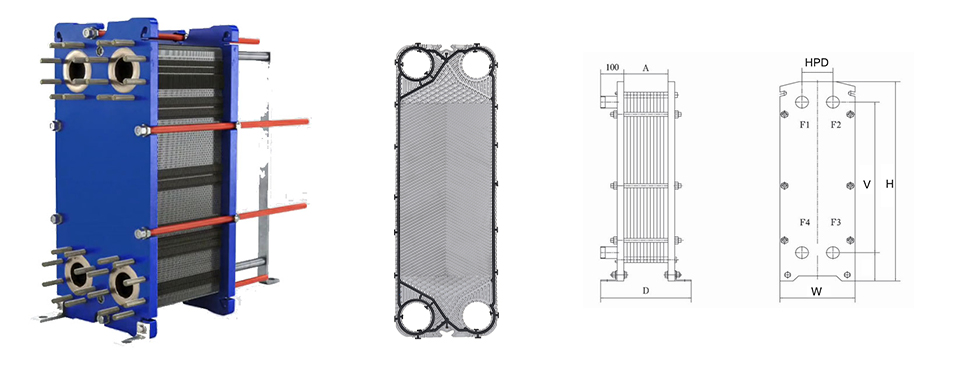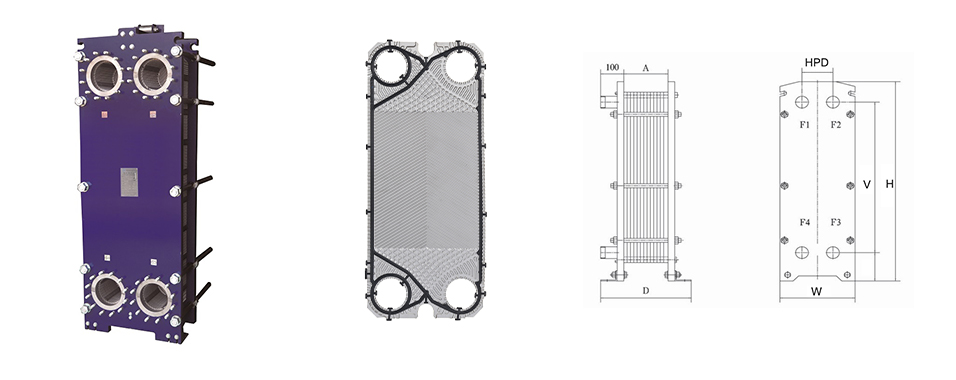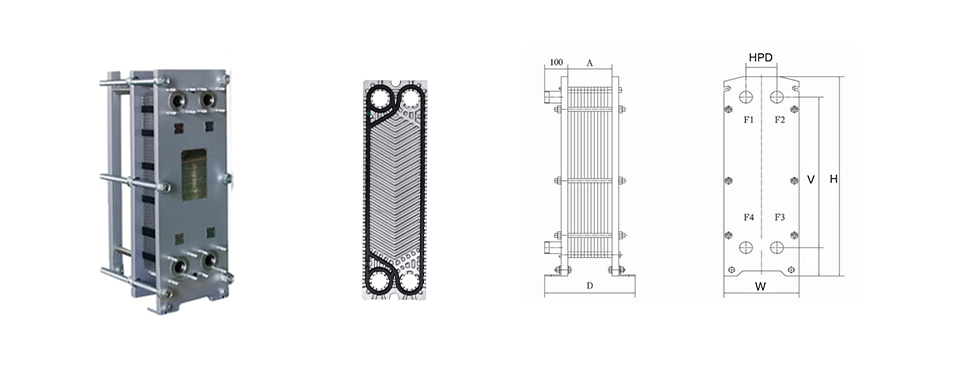Classification of heat tranter heat exchanger
1. Surface heat exchanger
Surface heat exchangers are two fluids with different temperatures flowing in a space separated by a wall, and heat exchange between the two fluids is carried out through the heat conduction of the wall and the convection of the fluid on the wall. Surface heat exchangers include shell-and-tube, double-pipe and other types of heat exchangers.
2. Regenerative heat exchanger
Regenerative heat exchangers transfer heat from high-temperature fluid to low-temperature fluid through a heat storage body composed of solid materials. After the heating medium reaches a certain temperature by heating the solid material, the cold medium is heated by the solid material to reach the heat The purpose of delivery. Regenerative heat exchangers include rotary type and valve switching type.
3. Indirect heat exchanger with fluid connection
The fluid connection indirect heat exchanger is a heat exchanger that connects two surface heat exchangers by a heat carrier circulating in it. The heat carrier circulates between the high-temperature fluid heat exchanger and the low-temperature fluid, and receives the high-temperature fluid. Heat, the low-temperature fluid heat exchanger releases heat to the low-temperature fluid.
4. Direct contact heat exchanger
A direct contact heat exchanger is a device in which two fluids are directly contacted for heat exchange, such as cold water towers, gas condensers, and so on.
tranter heat exchanger
Surface heat exchangers are two fluids with different temperatures flowing in a space separated by a wall, and heat exchange between the two fluids is carried out through the heat conduction of the wall and the convection of the fluid on the wall. Surface heat exchangers include shell-and-tube, double-pipe and other types of heat exchangers.
2. Regenerative heat exchanger
Regenerative heat exchangers transfer heat from high-temperature fluid to low-temperature fluid through a heat storage body composed of solid materials. After the heating medium reaches a certain temperature by heating the solid material, the cold medium is heated by the solid material to reach the heat The purpose of delivery. Regenerative heat exchangers include rotary type and valve switching type.
3. Indirect heat exchanger with fluid connection
The fluid connection indirect heat exchanger is a heat exchanger that connects two surface heat exchangers by a heat carrier circulating in it. The heat carrier circulates between the high-temperature fluid heat exchanger and the low-temperature fluid, and receives the high-temperature fluid. Heat, the low-temperature fluid heat exchanger releases heat to the low-temperature fluid.
4. Direct contact heat exchanger
A direct contact heat exchanger is a device in which two fluids are directly contacted for heat exchange, such as cold water towers, gas condensers, and so on.
tranter heat exchanger








